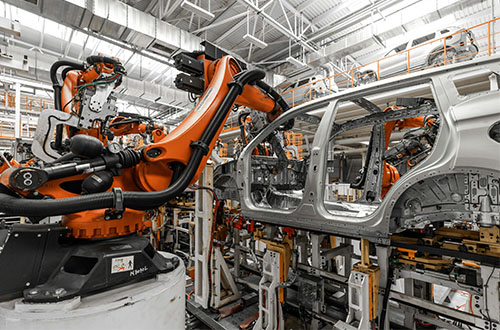

Mlogica Thought Leaders: Massive-scale Big Data, Generative AI and the Art of Business Intelligence

Ketan Karia, mLogica V.P. of Business Development and Solution Management
The most valuable asset any business possesses is its data. But how does this critical asset quickly lose value? When every second more data floods in from an ever-increasing number of sources, including the internet, social media, connected devices like cars, appliances, devices and more—and your system offers the equivalent of a teaspoon to manage this firehose of information.
Massive-scale big data, event analytics and business intelligence are critical technologies that let businesses maximize the potential of this barrage of information for timely, profitable decision-making. So, what exactly is massive-scale big data? It's the enormous volume, i.e., multiple petabytes, speed and variety of mixed data coming into your business from a virtually unlimited array of sources.
Today, big data can provide private and public sector organizations with critical information, not just on a host of internal business functions, but customer feedback, economic and global factors that impact sales and logistics and even connected devices. But how many organizations are getting the most out of this trove of information? A recent Gartner survey of organizational leaders on the role of data in their decision-making processes revealed:
- Only 23% of organizations always measure the results of their decisions
- Only 11% consistently measure outcomes using the correct metrics
- Only 8% evaluate good decisions more frequently than bad ones
A separate survey by Gartner on the various ways data-driven decision making drives value found:
- More than 33% of large enterprises plan to employ analysts utilizing decision intelligence, including decision modeling
- By 2025, chief data officers who implement value-stream-based collaborations will outdo their peers in value creation and cross-functional collaboration
- 51% of data and analytics leaders are integral to or leading digital transformation initiatives
- 65% believe the decisions they make are more complex than they were just two years ago
- 53% say there is an increased expectation for them to be able to explain or justify their decisions
The Big Data Revolution
The term big data describes the unprecedented volumes of information generated by the internet, digital tools, social media and IoT (internet of things) connected devices—data sets that legacy systems are simply unable to process effectively. Such petabyte-levels, in a diverse array of formats, require leading-edge event analytics, business intelligence platforms and Generative AI tools to turn them into actionable intelligence for timely decision making.
Data in All Shapes and Sizes
Data today arrives in a variety of formats, including structured, unstructured and semi-structured. Structured data, such as spreadsheets and databases, has a defined tabular format that makes it easier for systems to organize, search and analyze. However, today this makes up only about 20% of enterprise data, and with the explosion of new sources this percentage will continue to shrink.
Currently roughly 80% of all enterprise data is unstructured or semi-structured. Unstructured data, as the name implies, doesn’t have a standardized format, and can include videos, photos, text and more. Legacy tools created before the advent of social media, video phones and the internet are simply unable to effectively manage and analyze such a range of formats.
Semi-structured formats blend elements of both structured and unstructured data. While semi-structured data can contain certain metadata and semantic tags, it cannot be stored and arranged coherently in a database or spreadsheet. Given the increasing percentages of unstructured business files, it’s clear organizations that wish to effectively leverage all information for near-real-time decision making need hyperscale management solutions such as mLogica’s CAP*M Complex Events Analytics Platform (CEA).
The Speed Required to Meet the Demands of Business
The ability to converge all relevant information and produce reliable output is vital for any private or public sector organization. When selecting a platform, a key metric is the speed with which it’s able to ingest, load and process dynamic, high-volume streams of data, in varying formats, and transform them into an actionable, near-real-time asset. Legacy data management solutions simply cannot meet these ever-growing requirements.
Another vital criterion is the speed with which a big data solution processes queries and transactions, analyzes all relevant information and returns valid results. Any customer, partner or internal transaction may require hundreds or even thousands of data points for full validation—yet we expect this process to take just seconds.
Similarly, a research query or reporting function may leverage thousands or millions of discrete pieces of information, yet the demands of business require virtually instantaneous results. Industry best practices demand that organizations have the capability to identify distinct data sets that have the most impact on business goals and to prioritize their ingestion and analysis.
Is it any wonder technology created decades ago can no longer meet current best-practice business requirements? mLogica’s CAP*M Complex Events Analytics Platform (CEA) provides both ultra-high-speed loading and near real-time analytics to support data-driven decision making with optimal transaction and reporting speeds.
Ever-Increasing Stores of Data
Businesses both produce and attempt to ingest massive volumes of data every hour of every day, information from a variety of sources, including social media, IoT devices, websites, internal and external business processes, transactions and more. They also hold high volumes of historical records that are often hard to access, either because they’re siloed in legacy repositories—even as the staffers who understand these technologies are retiring—or because they’re decentralized across departments or locations. Consequently, aggregating all current and historical business data to make it usable is a monumental task that becomes more difficult every day.
The Right Tools Make All the Difference
As daunting as this influx of information can seem, big data presents enormous opportunities for organizations to gain a competitive advantage. By leveraging modern platforms that offer Generative AI-based tools and complex event analytics, companies can easily uncover patterns and gain in-depth insights into both external factors and internal business functions to reveal new revenue opportunities.
Leveraging the Full Scope of Business Intelligence
Business intelligence refers to the full range of emerging technologies that transform massive amounts of mixed data into actionable intelligence that can drive optimized decision-making, making it easier to spot future patterns, opportunities and challenges. These include:
Generative AI
Generative AI is starting to be used widely to automate and augment various business processes currently performed by machines and humans. Its benefits include improved productivity, faster innovation, personalized customer service and even radical predictive models that are changing the face of research through enhanced performance and accuracy.
Predictive Modeling
Predictive modeling takes historical data sets and extrapolates them to forecast future outcomes. However, by adding generative AI and big data analytics, organizations can expand on this by incorporating information from external sources. Generative AI allows businesses to produce comprehensive descriptive, diagnostic and predictive insights that can be used to map out future models, including alternative scenarios and probable outcomes for each action.
The Data is Clear
Big data, advanced analytics and business intelligence have transformed how organizations function and support decision-making. They provide an integrated view of all aspects of an organization’s business, including interrelationships as well as gaps that can become vulnerabilities.
mLogica’s CAP*M Complex Events Analytics Platform (CEA) allows organizations to take control of both their historical and incoming data to identify opportunities and challenges, streamline business processes and drive profitable decision-making for a lasting competitive edge.








































